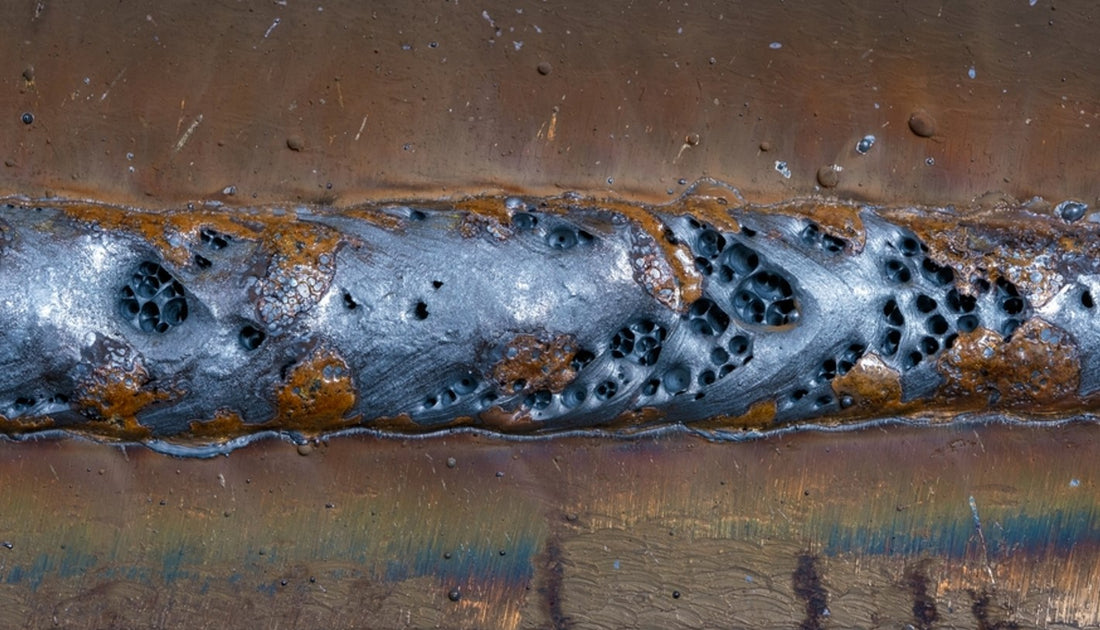What is Porosity in Welding: Usual Sources and Reliable Remedies
Understanding Porosity in Welding: Exploring Reasons, Impacts, and Avoidance Strategies
Porosity in welding is a relentless obstacle that can considerably affect the quality and honesty of welds. As professionals in the welding sector are aware, recognizing the causes, results, and avoidance methods connected to porosity is critical for achieving durable and reputable welds. By diving into the origin of porosity, analyzing its harmful effects on weld high quality, and discovering effective prevention strategies, welders can improve their understanding and skills to generate premium welds consistently. The elaborate interplay of factors adding to porosity calls for a detailed understanding and a positive method to guarantee successful welding end results.
Common Reasons of Porosity
Contamination, in the type of dust, grease, or rust on the welding surface area, creates gas pockets when heated up, leading to porosity in the weld. Improper shielding happens when the protecting gas, commonly used in procedures like MIG and TIG welding, is incapable to totally protect the liquified weld pool from reacting with the surrounding air, resulting in gas entrapment and succeeding porosity. Furthermore, insufficient gas protection, often due to inaccurate circulation rates or nozzle positioning, can leave parts of the weld unguarded, permitting porosity to form.
Impacts on Weld Top Quality
The presence of porosity in a weld can significantly compromise the overall quality and integrity of the bonded joint. Porosity within a weld creates spaces or cavities that deteriorate the framework, making it much more at risk to breaking, rust, and mechanical failing.
Additionally, porosity can hinder the efficiency of non-destructive testing (NDT) strategies, making it challenging to detect other problems or suspensions within the weld. This can result in significant safety and security concerns, specifically in crucial applications where the architectural integrity of the bonded parts is critical.

Prevention Techniques Summary
Given the harmful influence of porosity on weld high quality, efficient avoidance strategies are vital to preserving the architectural honesty of bonded joints. In addition, selecting the ideal welding specifications, such as voltage, current, and take a trip speed, can aid lessen the risk of porosity formation. By including these avoidance methods right into welding practices, the event of porosity can be important source considerably decreased, leading to more powerful and much more reliable bonded joints.
Significance of Proper Protecting
Correct protecting in welding plays a critical duty in protecting against climatic contamination and guaranteeing the integrity of welded joints. Shielding gases, such as argon, helium, or a mix of both, are typically made use of to safeguard the weld pool from responding with aspects in the air like oxygen and nitrogen. When these responsive aspects enter into call with the warm weld pool, they can create porosity, causing weak welds with decreased mechanical residential properties.

Inadequate shielding can lead to different issues like porosity, spatter, and oxidation, jeopardizing the architectural integrity of the bonded joint. Therefore, sticking to proper protecting techniques is vital to generate premium welds with marginal defects and make sure the longevity and dependability of the bonded components (What is Porosity).
Monitoring and Control Methods
Just how can welders successfully keep track of and regulate the welding process to make certain ideal results and protect against defects like porosity? One key method is through the use of sophisticated monitoring technologies. These can include real-time monitoring systems that provide responses on specifications such as voltage, current, take a trip rate, and gas flow prices. By constantly monitoring these variables, welders can identify inconsistencies from the ideal conditions and make immediate adjustments to stop porosity development.

Additionally, applying proper training programs for welders is crucial for keeping an eye on and controlling the welding process properly. What is resource Porosity. Educating welders on the importance of keeping constant specifications, such as proper gas securing and travel speed, can aid resource stop porosity problems. Normal assessments and accreditations can additionally guarantee that welders excel in monitoring and regulating welding processes
In addition, using automated welding systems can improve monitoring and control capacities. These systems can precisely control welding parameters, minimizing the chance of human error and guaranteeing regular weld quality. By incorporating advanced tracking innovations, training programs, and automated systems, welders can efficiently monitor and manage the welding procedure to reduce porosity flaws and accomplish top quality welds.
Conclusion
